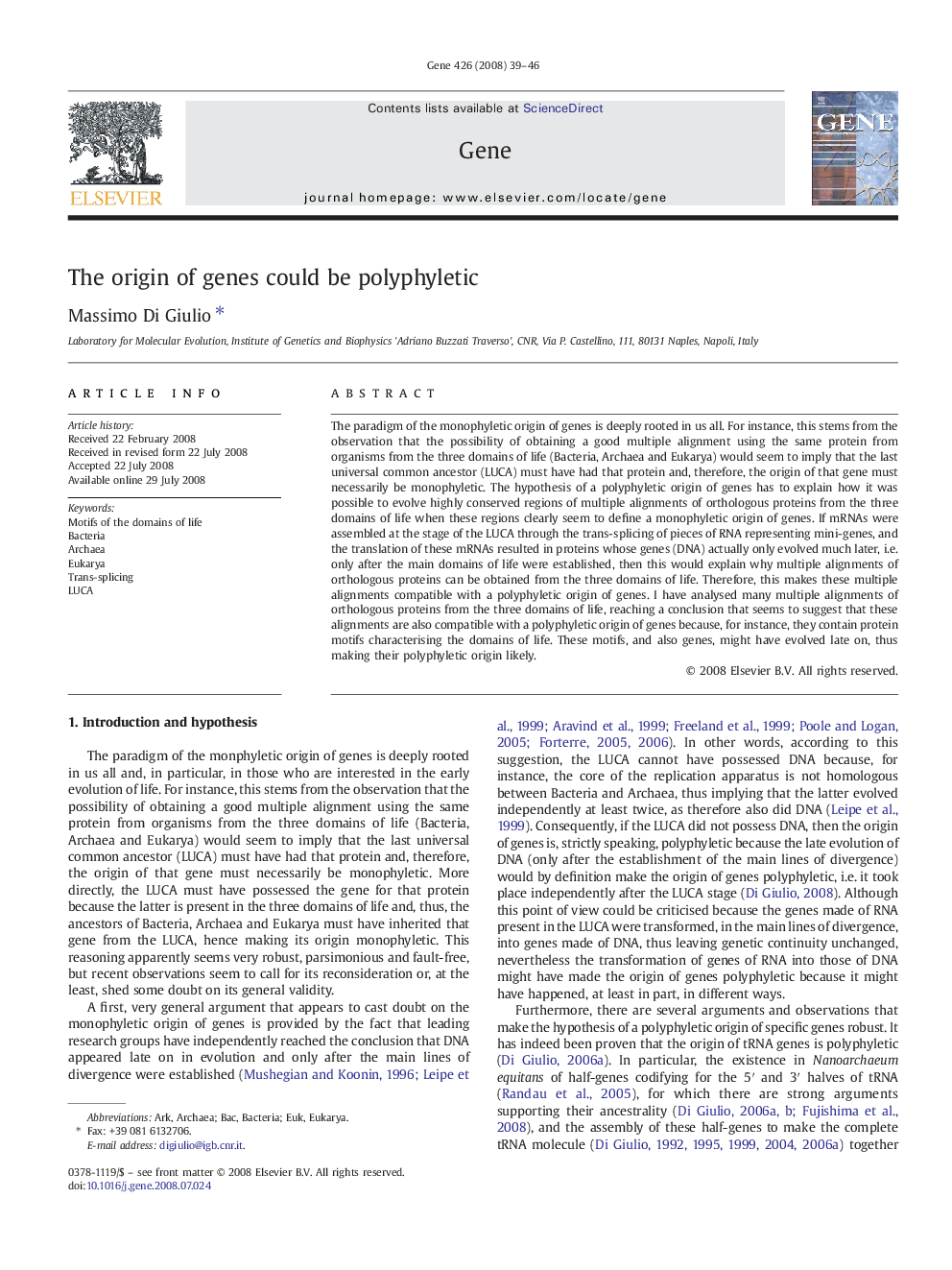| کد مقاله | کد نشریه | سال انتشار | مقاله انگلیسی | نسخه تمام متن |
|---|---|---|---|---|
| 2819063 | 1569905 | 2008 | 8 صفحه PDF | دانلود رایگان |

The paradigm of the monophyletic origin of genes is deeply rooted in us all. For instance, this stems from the observation that the possibility of obtaining a good multiple alignment using the same protein from organisms from the three domains of life (Bacteria, Archaea and Eukarya) would seem to imply that the last universal common ancestor (LUCA) must have had that protein and, therefore, the origin of that gene must necessarily be monophyletic. The hypothesis of a polyphyletic origin of genes has to explain how it was possible to evolve highly conserved regions of multiple alignments of orthologous proteins from the three domains of life when these regions clearly seem to define a monophyletic origin of genes. If mRNAs were assembled at the stage of the LUCA through the trans-splicing of pieces of RNA representing mini-genes, and the translation of these mRNAs resulted in proteins whose genes (DNA) actually only evolved much later, i.e. only after the main domains of life were established, then this would explain why multiple alignments of orthologous proteins can be obtained from the three domains of life. Therefore, this makes these multiple alignments compatible with a polyphyletic origin of genes. I have analysed many multiple alignments of orthologous proteins from the three domains of life, reaching a conclusion that seems to suggest that these alignments are also compatible with a polyphyletic origin of genes because, for instance, they contain protein motifs characterising the domains of life. These motifs, and also genes, might have evolved late on, thus making their polyphyletic origin likely.
Journal: Gene - Volume 426, Issues 1–2, 15 December 2008, Pages 39–46